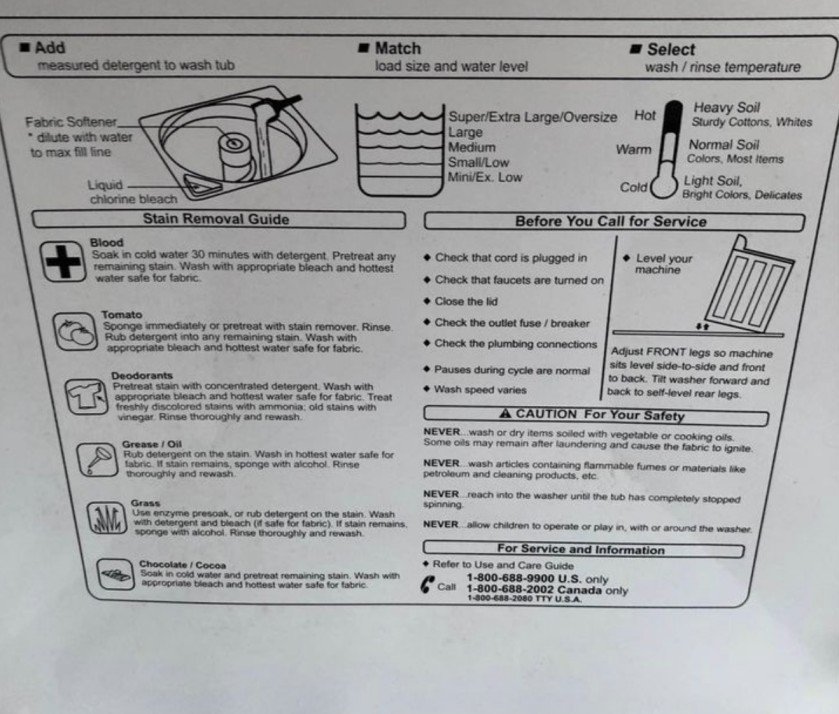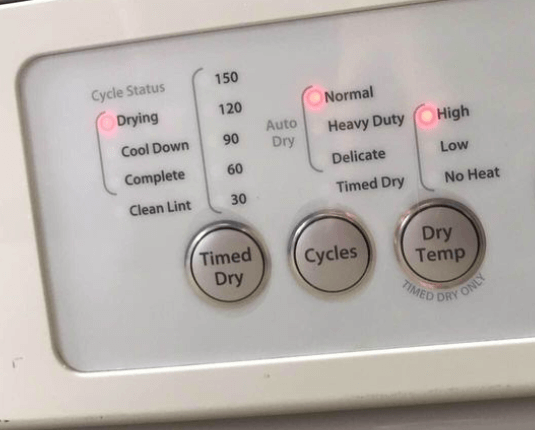Washing sheets regularly is key to maintaining their unique features for an extended period.
Since sheets are high maintenance, creating the perfect setting that adheres to the precise wash instructions is crucial.

Water Temperature
The heat level you introduce to the sheets can significantly affect them, so you should be extra careful with this setting.
Fabrics like cotton are durable and capable of surviving many conditions and settings. This ability leads to significant popularity and dominance.
You can wash cotton sheets at any water temperature; however, it is preferable to use hot water for a more effective wash.
Other fabrics do not share similar abilities, having adverse reactions to hot water or any high heat setting.
Delicate fabrics like silk, polyester, etc., insist on cold water temperatures to avoid shrinking, wrinkles, piling, loss of absorbency, and surface damage.
Sheets have a care label attached with instructions on the water temperature and other washing settings.
Laundry Additives
Use caution when choosing laundry additives for washing sheets because it will impact the cleanliness and fabric of the sheets.
Detergent
Detergent is how you wash the sheets but can also affect them positively or negatively.
Some detergents have strong cleansing abilities and additional ingredients like enzymes, optical brighteners, and softeners.
Enzymes are biological agents that target tough protein-based stains and remove them effortlessly during the wash. Enzyme detergents are especially vital when washing sheets because of sweat and food stains common with sheets.
Optical brighteners are ingredients that make sheets – especially white ones – appear brighter, preventing fading and discoloration.
These ingredients in detergents ensure your sheets come out of the washer clean, cozy, and fresh.
Consequently, the additional ingredients can be harsh on some delicate sheets, causing damage. In these instances, it will be better to utilize mild laundry detergents.
Try not to use too much detergent when washing sheets because you will not rinse it out totally, resulting in detergent residue building up on the sheets.
Fabric Softener and Bleach
When washing sheets, avoid these items because they can damage them. Fabric softeners apply chemicals to clothes, creating a soft feel afterward – it is also a pain to remove from the clothes.
These chemicals can be harsh on certain fabrics and cause buildup on others. A suitable alternative to fabric softeners is white vinegar. It has cleaning, softening, deodorization, and brightening properties without damaging fabrics or leaving residue behind.
Chlorine bleach whitens many clothes except sheets which turn yellow because of the interaction with sweat stains. Oxygen bleach, however, doesn’t have the harsh chemicals that will damage sheets.
Machine Washing or Hand Washing Sheets

You can hand wash sheets or place them in the washer, depending on your preference.
Steps to Follow Before Washing Sheets
- Check the sheets’ care label.
Every sheet has a care label that gives the user maintenance instructions to prevent accidental damage. This care label solves the confusing questions about the procedure when you want to wash your sheets. Questions like the water temperature, wash cycle, choice of laundry additives, drying temperature, etc.
The care label will also let you know if you can place the sheets in the washer, hand wash them, or send them to the dry cleaners.
- Sort the sheets well
Sheets have a variety of colors and fabrics, all with unique wash practices; mixing them while washing can cause significant damage because you may use the wrong water temperature or laundry additive.
Dark-colored sheets can transfer color to light-colored sheets, causing fading or discoloration.
Don’t mix the sheets with other clothing to avoid damage. Clothes with zippers and buttons can tear the sheets, and different laundry weights can affect effective washing.
Machine Washing Sheets

There are many factors to consider when trying to create the best setting for washing sheets.
Wash Cycle
With a washing machine, the selected wash cycle determines how the clothes will turn out; sheets are no exception.
The primary wash cycles in washers are:
- “Normal/Regular” wash cycle: This cycle uses long wash periods, high spin speed, and intense agitation to wash clothes. Select this wash cycle for durable fabrics like cotton.
- “Delicate/Gentle” wash cycle uses short wash periods, low spin speeds, and reduced agitation to wash clothes. Select this wash cycle for delicate fabrics like silk.
As the washing machine technology advances, companies update their products with other niche wash cycles, like:
- Heavy wash cycle
- Silk wash cycle
- Sheets wash cycle
- Permanent press wash cycle
These wash cycles contribute to the confusion when washing clothes that care labels aim to solve by recommending wash cycles for the sheets.
Loading the Washer
Washers have a weight capacity that affects functionality. Putting heavier loads than the washer can carry will prevent effective washing and spinning and may lead to mechanical damage.
Separate your sheets into smaller loads to avoid tightly packing them and produce better results. The appropriate washer environment is one in which the sheets move freely during the wash.
Hand Washing Sheets
Some people prefer washing delicate sheets by hand to control the level of agitation. Follow the same precautions when hand washing because it is similar to machine washing.
Use a container that will allow the sheets to move freely in the water. A bathtub or sizable will be suitable.
Before hand washing your sheets, ensure the container is clean; clean it if you’re unsure. Grime and residue can transfer to the sheets, impeding effective washing.
Drying Sheets

Drying your sheets is a delicate process because their condition becomes permanent afterward with no opportunity for do-overs. It will take hours for sheets to dry, and the environment you create for the sheets during those hours is vital.
How to Dry your Sheets
Hanging your sheets to air-dry is the best way to avoid wrinkles and creases on the sheets. Air-drying will ensure that the sheets have the space to dry without bunching up together in a tight area.
The sun lends its brightening and deodorizing properties to the sheets when you air-dry them. Air-dry them on a clothesline outside or in a well-ventilated room with access to the sun. But be careful that you do not place dark-colored sheets under direct sunlight to prevent color fading.
Delicate sheets will benefit from air-drying.
Tumble drying your sheets might not be ideal, but you can utilize the method.
Use the lowest heat setting and minimum drying time the dryer provides to avoid damaging the sheets.
How often should you Wash Sheets?
The correct time frame for washing sheets is every week, either once a week or twice weekly. This wash frequency will ensure the sheets are not too dirty when washing.
Spot clean stains the instant you get them because when they dry on the sheet, they become difficult to remove.
How to Handle Shrinkage, Wrinkles, and Tears on Sheets?
Shrinkage, wrinkles, and tears can be a consequence of terrible wash practices; they can also cause horrible wash practices.
Overloading the washer, using excessive heat, and leaving the sheets wet are some of the reasons they shrink or get wrinkles. The biggest culprits are natural fabrics like cotton, rayon, and bamboo.
Improper handling of the sheets can cause tears and rips. These tears will only worsen in the washer and dryer without repair.
